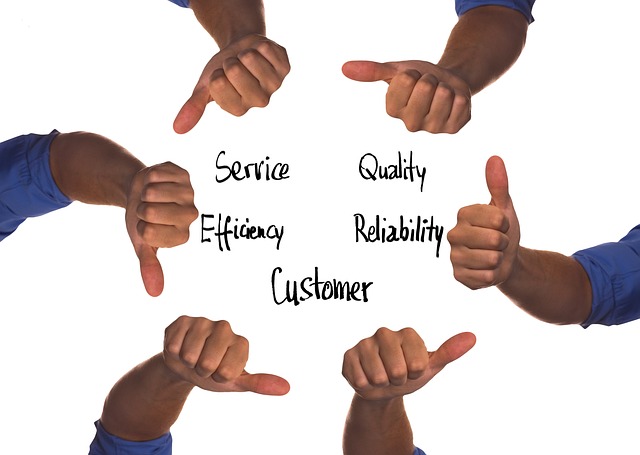The Importance of Email List Segmentation in E-Commerce Marketing
Email marketing remains one of the most effective strategies in the e-commerce world. However, if you’re not utilizing email list segmentation, you’re missing a golden opportunity to connect with your audience in a meaningful way. To truly engage your customers, you need to send them tailored content that resonates with their interests and behaviors. This process is known as email list segmentation, and it serves as a cornerstone for effective e-commerce marketing. By strategically dividing your email list into various segments, you can craft personalized experiences that drive engagement and increase conversions.
Let’s explore why email list segmentation is crucial for e-commerce marketing. First, consider the sheer volume of emails an average consumer receives daily. Standing out in this crowded space demands more than generic messaging. Customers appreciate when brands understand their preferences and needs. By segmenting your audience, you gain insight into what each group values. This understanding allows you to develop targeted campaigns that speak directly to those interests, thus improving open rates and click-through rates considerably. When a customer feels that a brand acknowledges their unique preferences, they become more likely to engage with the content you share, ultimately driving sales.
Furthermore, email list segmentation enables increased customer targeting. Not all customers are created equal. Some may be loyal, long-term buyers, while others are just beginning their journey with your brand. By identifying these groups, you can tailor your messages accordingly. For instance, loyal customers might appreciate exclusive offers or early access to sales. In contrast, new customers may need to be nurtured through educational content about your products or services. This type of personalization not only cultivates customer loyalty but also fosters a sense of community around your brand.
Understanding Your Audience Through Segmentation
To make segmentation work effectively, first focus on understanding who your customers are. Your audience may consist of various demographics, behaviors, interests, or buying patterns. The more data you gather and analyze, the better equipped you’ll be in segmenting your email list. Begin by collecting information during the sign-up process. Queries about preferences, buying habits, or even just a simple question about what type of products interests them can provide vital insights.
Once you gather that data, you can begin segmenting your list. For instance, consider using demographic segmentation. This method divides your audience based on age, income, or location. Each demographic responds differently to marketing messages, so tailoring your emails according to these elements can enhance engagement. Additionally, behavioral segmentation focuses on how customers interact with your brand, what they purchase, and how often they buy. Customers who frequently purchase during sales might receive different messaging than those who primarily buy full-priced items.
Moreover, psychographic segmentation takes things a step further by examining customers’ attitudes, interests, and lifestyles. Understanding your customers on a deeper level helps you create pertinent content that resonates with their values and beliefs. Essentially, the more you know, the more personalized your approach will be. Tailored content ensures that your email campaigns feel relevant rather than intrusive, thus improving engagement and conversion rates.
Benefits of Email List Segmentation in E-Commerce
Email list segmentation opens up a variety of benefits for your e-commerce business. For starters, targeting specific segments allows you to craft personalized messages that appeal directly to each group. People are more likely to engage with content that feels relevant to them. This relevance translates into higher open rates and click-through rates, which are crucial for boosting sales outcomes.
Additionally, segmentation helps you reduce unsubscribe rates. When you bombard your entire email list with irrelevant content, you risk frustrating your customers. Personalized emails retain the interest of your audience. As a result, you build stronger relationships through thoughtful communication. Over time, a well-segmented email list can lead to lower churn rates and foster an environment of customer loyalty. Customers who feel valued and understood often become repeat purchasers.
Segmentation also enables better campaign performance monitoring. By dividing your email lists into manageable segments, you can track the success of your campaigns with greater accuracy. Are your emails resonating with specific demographics? Are certain segments responding positively to promotions while others are not? Such insights are invaluable as they inform future marketing strategies. You can move beyond generic assumptions and adopt a data-driven approach to your e-commerce email marketing efforts. Over time, this leads to a more efficient allocation of your marketing resources.
Strategies for Effective Email List Segmentation
When it comes to implementing email list segmentation, various strategies can enhance your e-commerce marketing efforts. First and foremost, employ an analytics tool to gather and interpret data. Most e-commerce platforms provide built-in analytics that can help you understand customer behavior effectively. Look at key metrics like purchase frequency, average order value, and product interests.
Also consider segmenting based on the sales funnel stage. New subscribers may require a welcome series, whereas long-time customers might benefit from loyalty programs. Your email strategy should adapt as customers move through this funnel. Moreover, utilize engagement metrics to sort your testing. Understanding who clicks on links versus who simply opens emails can offer insight into which segments require more engagement efforts. If high-value customers stop engaging, it may indicate a need to refresh your messaging or offers.
Testing different segments with A/B splits can also refine your campaigns. Experiment with varying subject lines, content types, or send times to identify what yields the best results. The data collected here can prove invaluable for future campaigns. As you get more familiar with your segments, you can start leveraging more advanced techniques, such as automation based on user behavior, which aids in streamlining your marketing process.
Common Mistakes to Avoid in Email List Segmentation
While email list segmentation can significantly augment your e-commerce marketing strategy, it’s essential to navigate the journey carefully. There are several common pitfalls to avoid. One significant error is neglecting to update your segments regularly. Customer preferences and behavior often shift. If your segments remain static, you risk sending irrelevant content. Review your data periodically and make updates as necessary to ensure your segments reflect your audience’s current state.
Another mistake involves creating overly narrow segments. While targeted messaging is beneficial, being too specific can limit your reach. Ensure you maintain a balance between targeted and broader messaging, so you don’t alienate potential customers who might not fit neatly into a particular box. Additionally, failing to test different approaches can lead to stagnation. Continually refining your strategies through testing not only helps you improve engagement but can also reveal insights you might have otherwise overlooked.
Finally, avoid assuming that all subscribers want the same thing. Even within your segments, customers may have varied interests and preferences. Feel free to ask for input where possible, whether through surveys or engagement metrics. This practice equips you with the data needed to adapt and cater to customer desires effectively.
Conclusion: The Future of Email List Segmentation
As the world of e-commerce evolves, email list segmentation remains more relevant than ever. The ability to connect with customers personally can be the distinguishing factor between a thriving online business and one that struggles to stand out. As brands continue to embrace technology and data analytics, the sophistication of segmentation will only enhance. By focusing on the customer experience and tailoring communications based on their behaviors and preferences, e-commerce brands can foster loyalty and drive sales in a competitive landscape.
FAQ
1. What is email list segmentation?
Email list segmentation refers to the practice of dividing an email list into distinct groups based on specific criteria, such as demographic information, purchasing behavior, or engagement levels. This strategy enables marketers to deliver targeted and personalized content to different segments, improving overall campaign effectiveness.
2. Why is email list segmentation important for e-commerce marketing?
Email list segmentation is vital because it allows e-commerce businesses to tailor their marketing messages to specific audience segments, enhancing engagement and conversion rates. It helps create relevance in communication, thereby reducing unsubscribe rates and boosting customer loyalty.
3. What are effective strategies for email list segmentation?
Effective strategies include leveraging demographic data, behavioral analytics, engagement metrics, and sales funnel stages. Testing different segment strategies through A/B testing can also enhance effectiveness. Regular updates and feedback collection will ensure segments remain relevant.
4. How often should I update my email segments?
It’s wise to review and update your email segments regularly, ideally every few months, or whenever significant shifts in customer behavior are detected. This ensures that your marketing efforts resonate and stay relevant to your audience’s evolving interests.
5. What common mistakes should I avoid in email list segmentation?
Avoid neglecting to update your segments, creating overly narrow segments, failing to test different approaches, and assuming all subscribers want the same content. Regularly reviewing and testing your strategies will help optimize engagement effectively.



